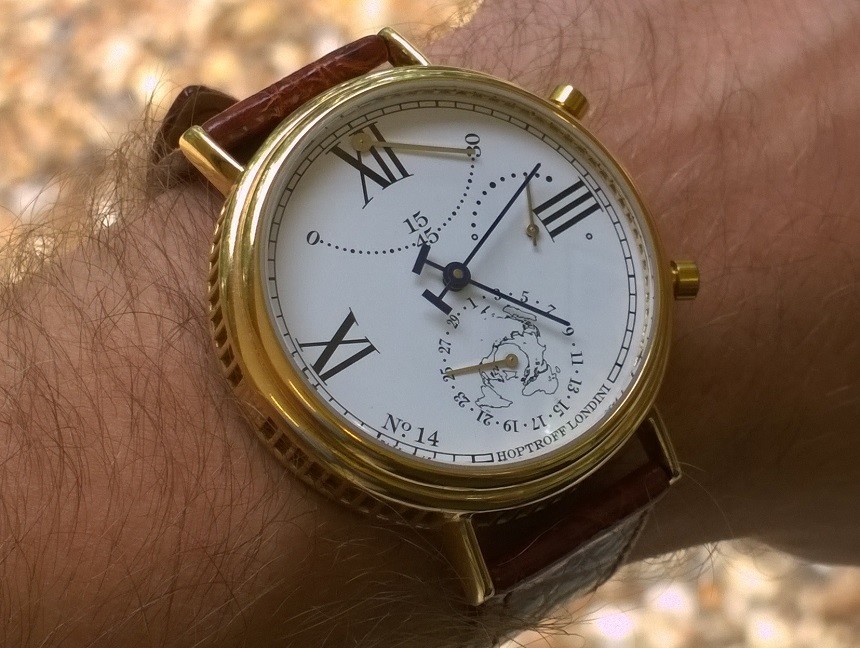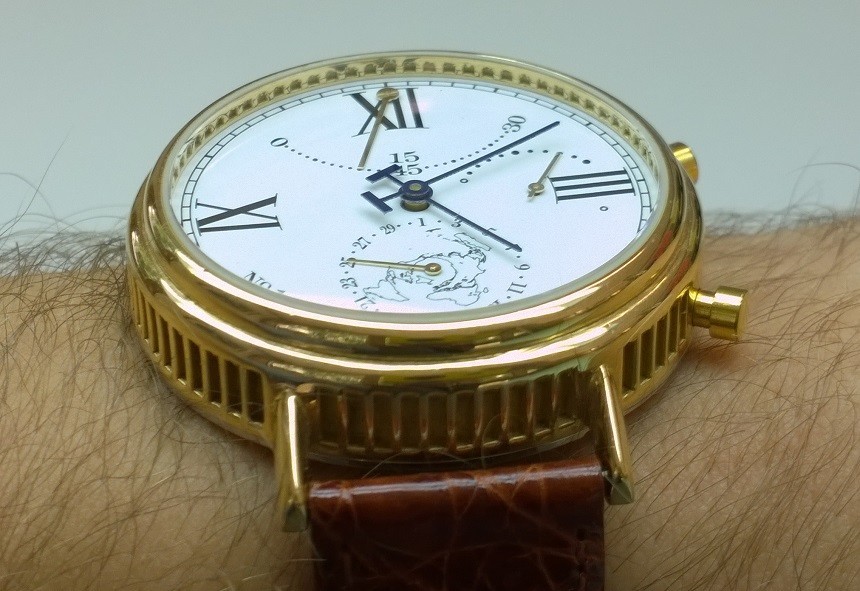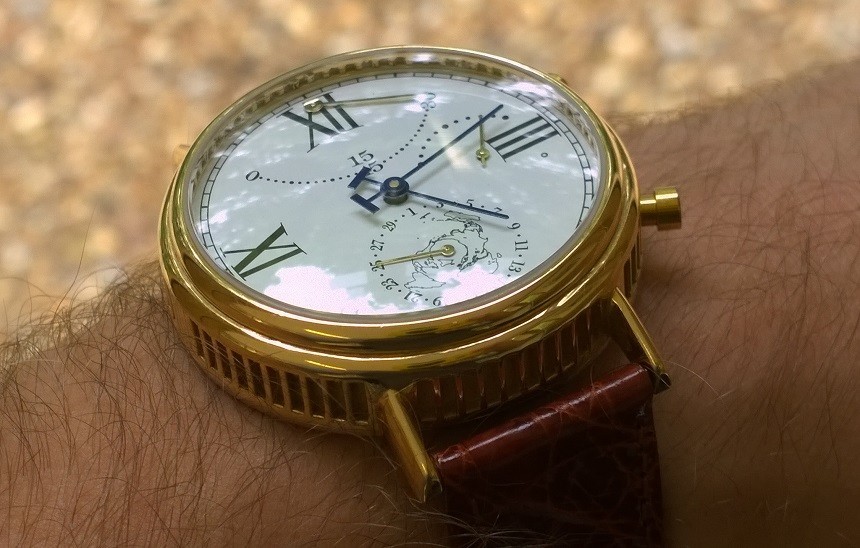
For the past fortnight, I’ve been walking around with the new Hoptroff No.14 on my wrist, and I must admit it’s been an enjoyable experience. When it comes to branding, there are not many more identifiable than Hoptroff. The London-based watch company is unusual in style (notice the absence of a crown) and unique in goals. The Hoptroff No.14 utilises the same underlying technology we’ve seen in previous Hoptroff wristwatches, but separates itself from its peers with a charming personal touch – an anniversary countdown indicator. This simple semi-circular sub-dial located at three o’clock, can be used as a birthday, meeting, or special date reminder. How can this – as well as the time and date – be programmed with just two pushers, I hear you ask? The answer lies in your pocket…

The crucial thing about all Hoptroff watches is the way in which the technology enables the wearer to create a relationship with their timepiece. These are not smart watches, nor should they be regarded as multi-tools. They are classically styled watches with a hint of connectivity. It’s a laudable attempt to add some soul to the benefits of modern functionality. Digital smart watches can display endless amounts of information on miniature computer screens, but they do not look like watches. They don’t even need hands. Fundamentally, pure smart watches have very little in common with classical timepieces, save where they are worn. Where they are similar, though, is the way in which they can link up with your phone to enhance the time-telling experience.
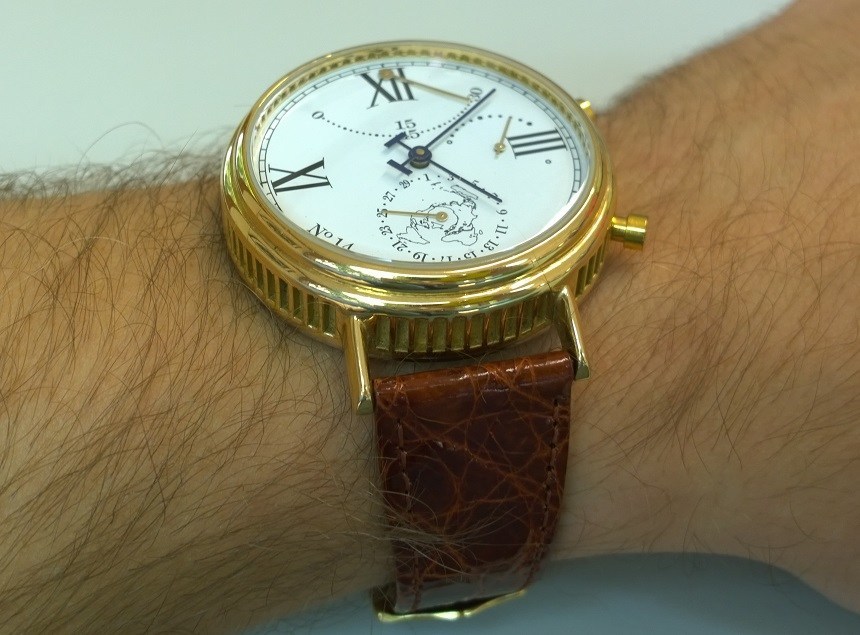
By downloading the free Hoptroff App (available on iPhone and Android OS), you can set the time, adjust the hands individually, change your time zone (particularly fun when you shift to Kathmandu), set up your countdown (up to ten days in advance), and modify the date, all through your phone handset. The link is established by turning on bluetooth on your phone and by pressing the 2 o’clock (or 10 o’clock if you are left handed) pusher. Almost immediately, the device will be recognised.
All you have to do is select the watch name on the phone and you’re good to go. It is kind of freaky, kind of awesome, to play with a watch of this style remotely. It doesn’t look like it should be happening, but it is. And it is weirdly satisfying. If you don’t have your phone on hand, the watch can be adjusted manually using the pushers to advance each of the hands separately. The user manual goes into great detail, but needless to say, the best way to use this watch is the way Hoptroff intended it be used – with the phone!
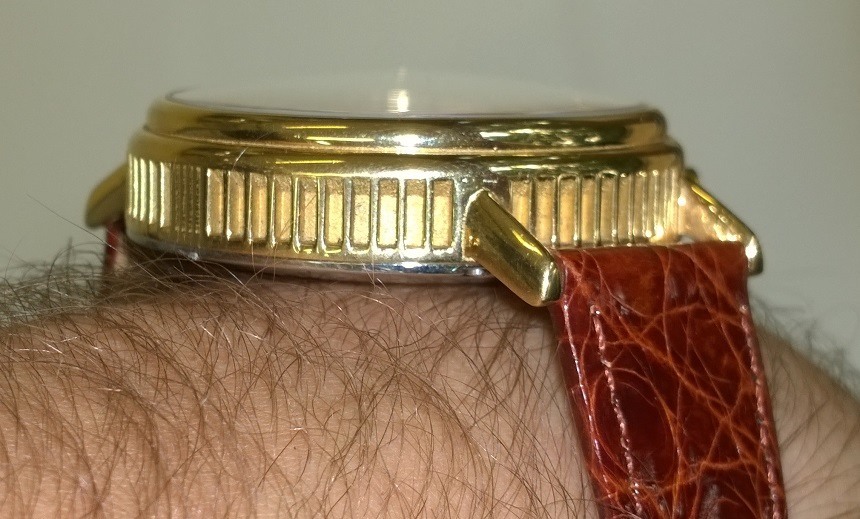
Recently, I reviewed a watch whose winding crown had the most glorious sense of mechanical immediacy I am yet to find. The HYT H1 Air RC44 (check out the review here) established a deeply engaging physical link between the winding of the exterior crown and the movement of the internal liquid. It felt like you were pushing the liquid round the dial with your fingers. I loved it. I thought that I had finally figured out the recipe for building a good relationship between the wearer and the watch – material connectedness.
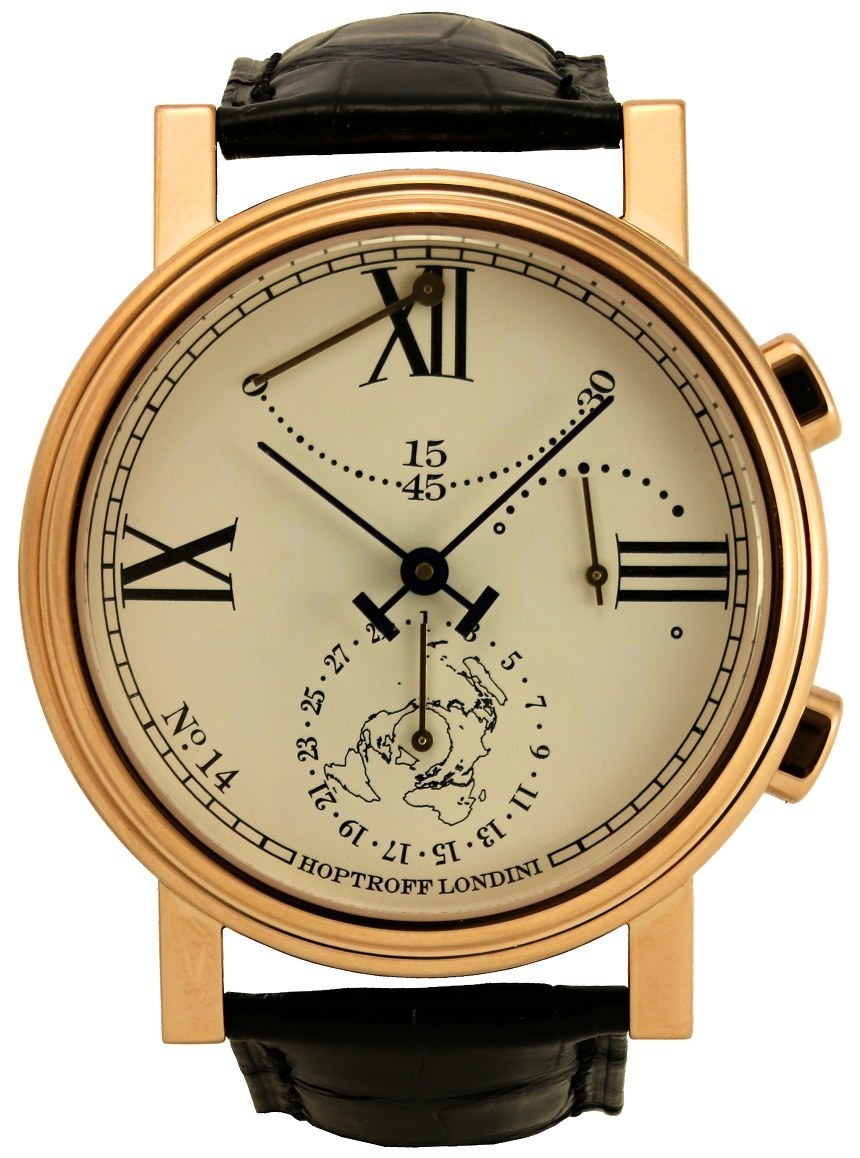
It turns out I was only half right. I thought that to feel connected to your watch there had to be a physical relationship between the way your movements were manifested in the movements of the watch mechanism. However, controlling this watch remotely is just as intimate and a heck of a lot of fun (especially if you sit the watch a couple of metres out of reach). It’s hard to explain, but there is definitely something there that makes this such a fulfilling exercise. The “call” of your instruction, and the “response” of the timepiece is like a well rehearsed song. I guess the magic comes from the fact that a physical movement is being initiated by a non-physical instruction. It’s a different kind of link-up. And it’s really cool.
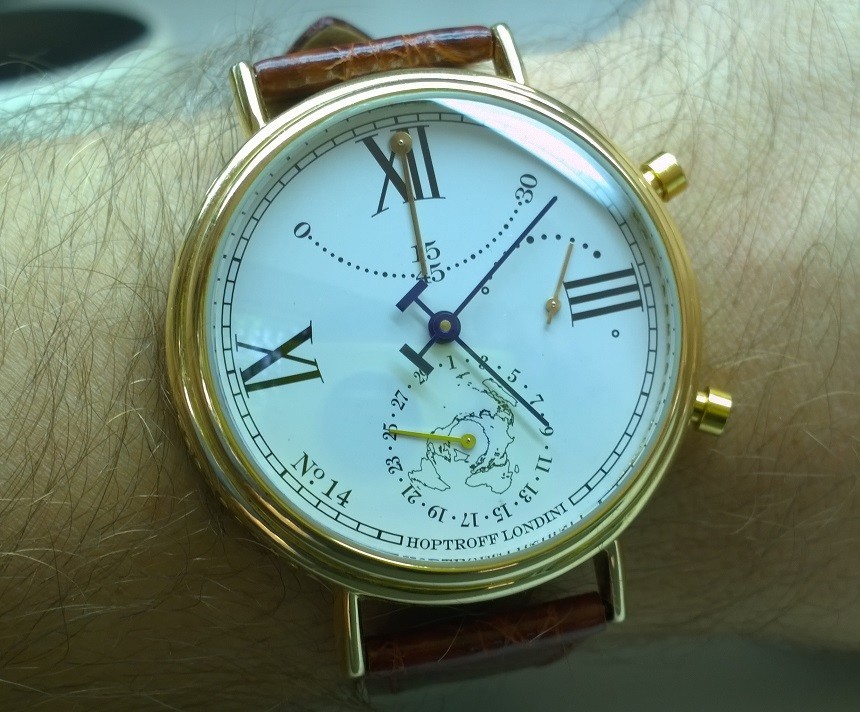
I imagine a lot of people would be instantly put-off by the Hoptroff range because the time-keeping element of these watches is a quartz crystal. But these are much more than quartz movements. Referred to as “mechatronic,” these London-designed calibres straddle the fields of quartz watchmaking and bluetooth powered connectivity. There’s nothing exactly like it on the market. You may think it is pointless, you may think it is ugly, but you’d be hard pushed to say that this combination of goals, styling, and operation wasn’t unique.
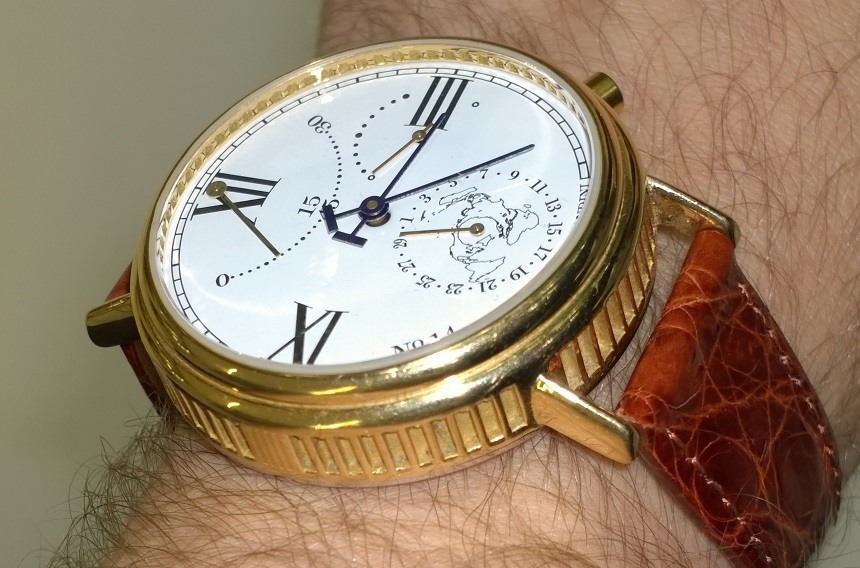
And that’s because these movements were designed and assembled in England. Some components, like the stepping motors that drive all of those hands, were outsourced to Switzerland, but the bulk of the creation process took place on British soil. Hoptroff may not be part of the mechanical renaissance some other British brands are trying to stoke, but this is a company that offers a new string to the British bow. The British have a great tradition of innovation in horology. This development may rankle some purists, but it is interesting to consider how Hoptroff’s endeavours could perhaps be fused with a more traditional approach to movement manufacture to create something hitherto unseen. Such a suggestion is unlikely to gain any immediate ground, but if these inventions keep on coming, who knows what collaborations the future might hold.
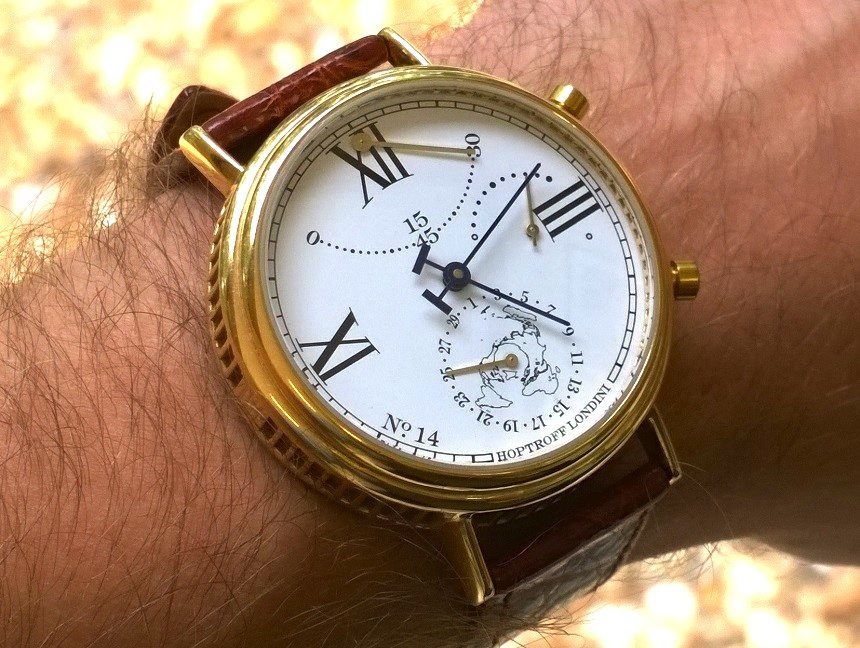
The Hoptroff No.14 has a very nicely designed dial, which is printed for the brand by a UK-based manufacturer more commonly associated with the dashboard indicators of high-end motor cars. At 12 o’clock, a “back-and-forth” seconds hand “rocks” from 0-30 and back again. It is a really unusual take on the seconds hand. It looks like a traditional retrograde, but because of Hoptroff’s almost limitless configuration and programming options, functions quite distinctly.
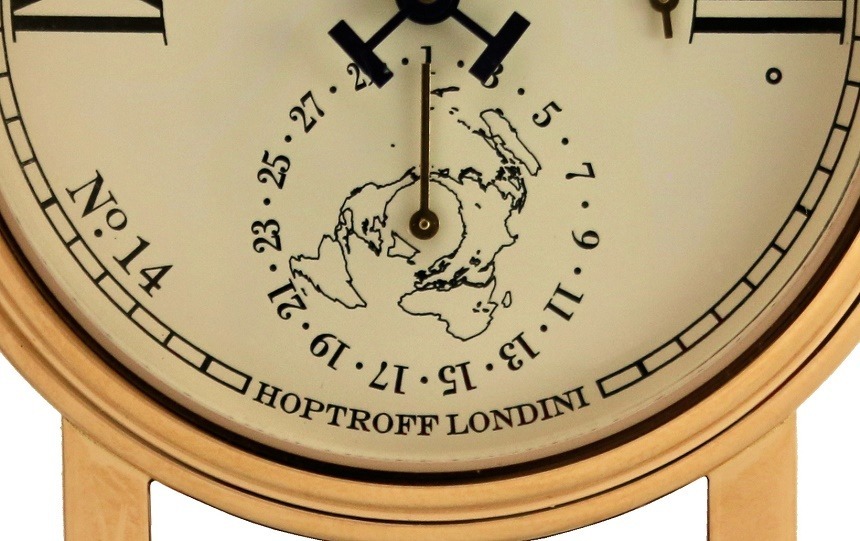
The top-down image of the earth, displayed at six o’clock adds decorative interest to the date complication. Its origin was a proposed time zone complication, but the visual was so popular, it was used again. I’m a bit of a sucker for maps and old-school adventure gear, so I like the effect of this image, even if it bears no practical purpose. It seems to marry well with the case, which is almost architectural in style. The “columns” that adorn the flanks are available in two depths depending on the mode of case production you choose. You can either have a traditionally milled case, on which the columns are much shallower and rounded at the extremities, or a 3D printed case (yes, really), on which the gaps between the columns are a full 1mm deep. The hands-on photographs featured in this article are of the 3D printed case unless otherwise stated.
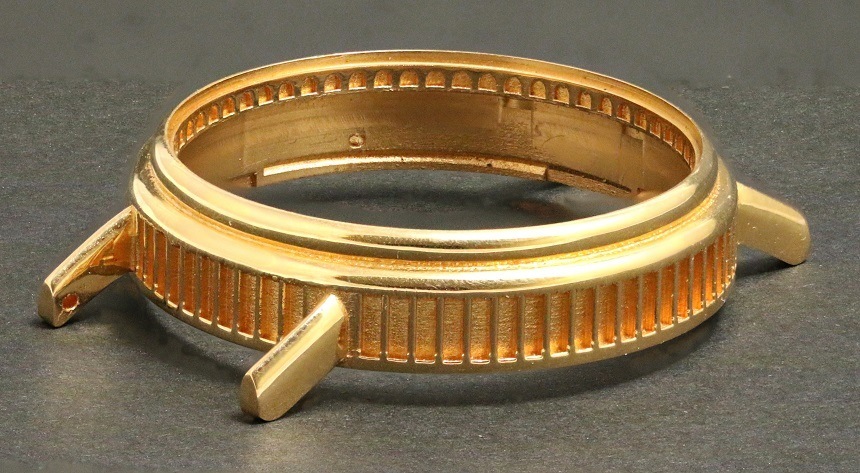
This kind of flexibility of design, enabled by the avant-garde use of SLA (stereolithography, or 3D printing) technology is a potential game changer. Whether it works in this instance is up for debate. The proportions are unarguably striking, but the finish of 3D printed gold is not in anyway the norm for luxury watches. The creation process (sintering) is carried out in Birmingham, UK, and leaves a rough, almost granular finish on the surface of the gold. It can be buffed like a traditional case, but the deep recesses enabled by the creation process are not reachable by a normal polishing mop and so have been left in their rough state. Hoptroff himself enjoys the honesty of this finish; I am still in the milled camp.
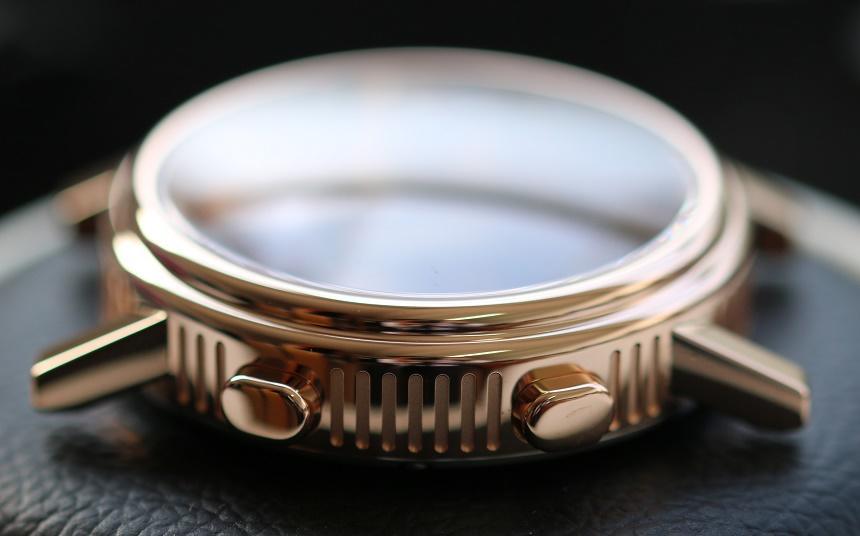
The milled case shown for comparison. This version is available at the same price as the 3D printed version and is not subject to the same waiting period of three months.
In my opinion, the presence of 3D printed cases in watchmaking is an exciting development. I think this watch blazes a trail in that regard, and I respect the brand for taking the time to realise this concept, but I think the process needs refinement. Right now, the main appeal of the 3D printed case is the technology itself. That alone is a strong selling point, but for it to really make the world sit up and take note, the end quality must be as good as, if not better than, the traditional technique.
Granted, no milling machine can achieve the angles an SLA printer could. Then again, the way in which 3D printers work means the end product might suffer from slight imperfections or inaccuracies. This does not seem to be the case at all with the Hoptroff No.14 in terms of strength and water resistance, but the weaknesses of 3D printing can be seen when the underside of the bezel is inspected between the column gaps. Because 3D printers build up the product in layers, each subsequent layer has its foundation in the preceding layer.
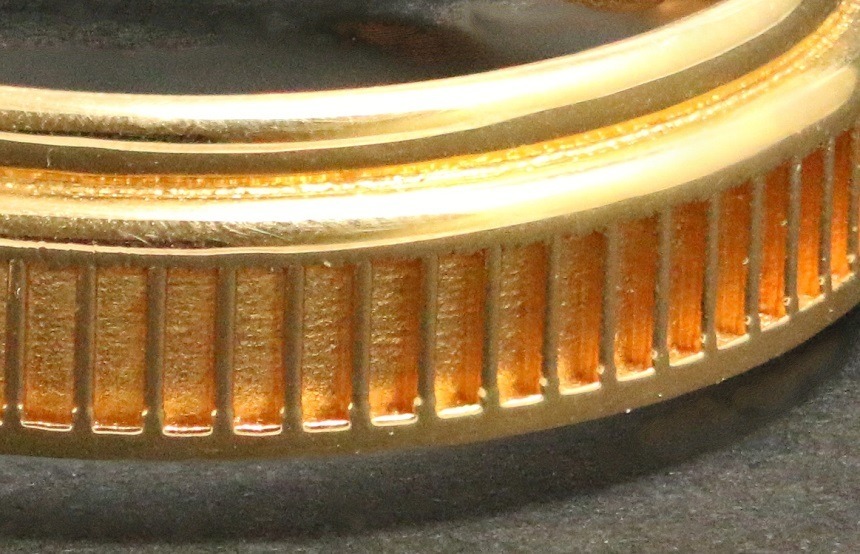
Note the more angled edges enabled by SLA printing and the surface finish left by the sintering process. The surface of this piece will be highly polished, but the recesses will retain this textured finish.
When printing an “overhang,” you could expect to see some particulate shift, or collapsing. Imagine this: The easiest thing to print with a 3D printer would be a pyramid, as each of the layers has more material beneath it than above. Trying to print a layer that is larger than the underlying substrate could result in it bowing or deforming under its own weight.
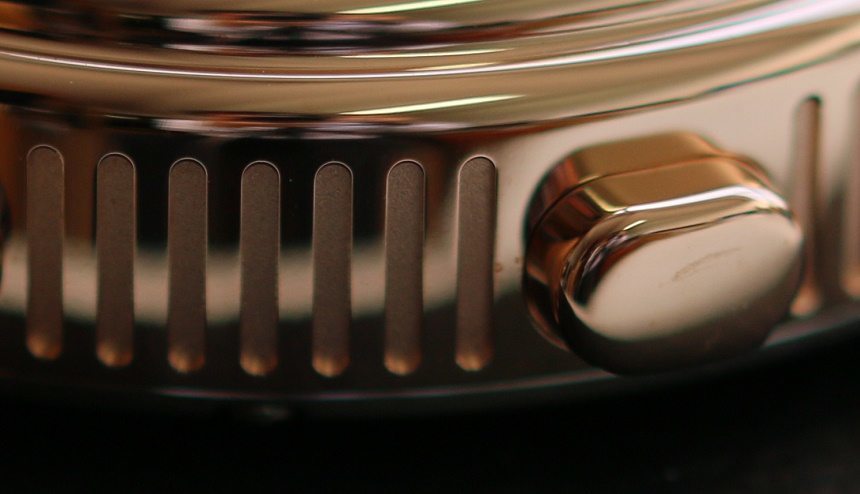
Milled case for comparison: Clean finishing, but rounded columns due to the shape of the drill head used in the milling process.
This, as with all of Hoptroff’s watches, is an object of personality. To make that as true in a practical sense as it is in a philosophical sense, the movement has been designed to work in a left or right handed case. There are contact points for pushers mounted on either side of the housing, so all the assemblers at Hoptroff have to do is rotate the movement 180 degrees within the case, and voilà! The watch can be made to fit anybody in seconds.
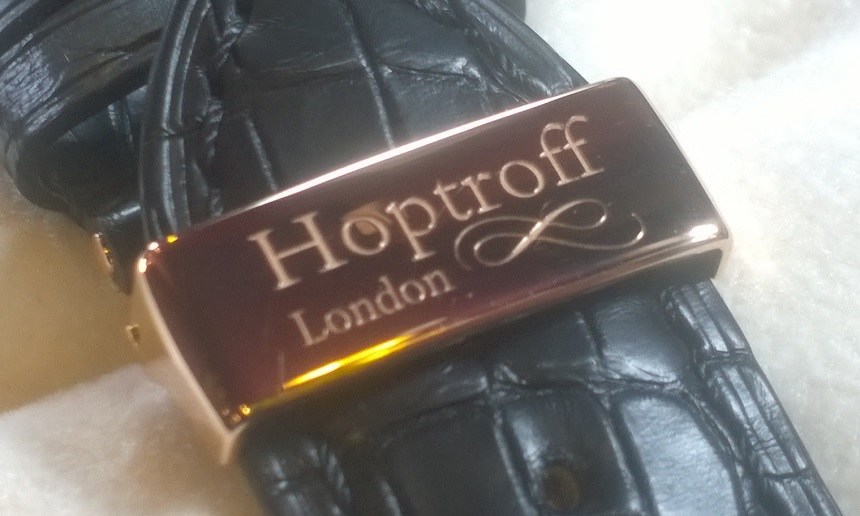
The Hoptroff No.14 is available in stainless steel, 18kt yellow gold, 3D printed 18kt yellow gold, and 18kt rose gold. There is a 3 month waiting time on the 3D printed case and a 25% deposit is required up front. The fold-over clasp is beautifully engraved with the Hoptroff script and logo, and is a really excellent clasp, both functionally and aesthetically.
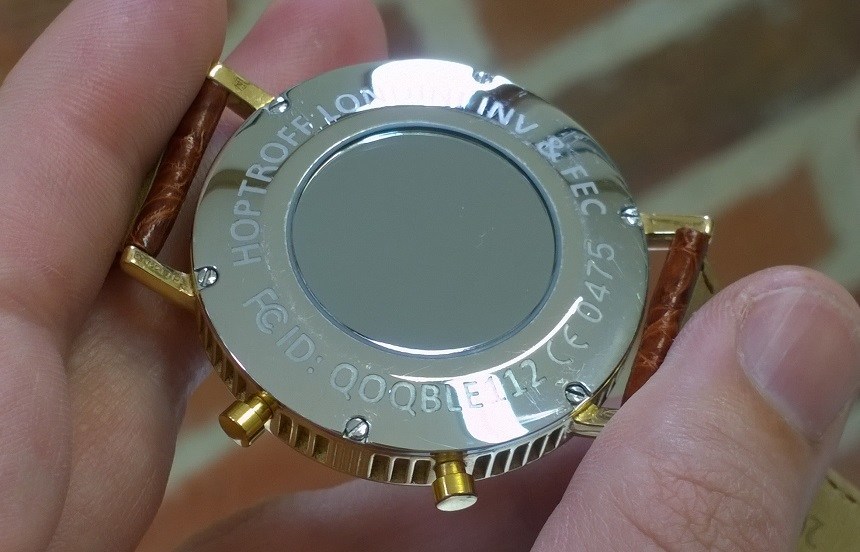
All watches feature a stainless steel, screw down case back. This was because the bi-colour look when teamed with the gold was an aesthetic the design team found pleasing, and also because each case back is fitted with a glass “mirror” in place of a viewing window. This is to enable a clearer transmission of data between the watch and phone. The mirrored window appears like highly polished steel and, were it not for the gasket, which holds it in place and ensures water resistance to 30 meters, you wouldn’t even notice a change in material. The stainless steel variant costs £4,000 + VAT (20%), and all gold versions have a price of £12,000 + VAT. hoptroff.com

